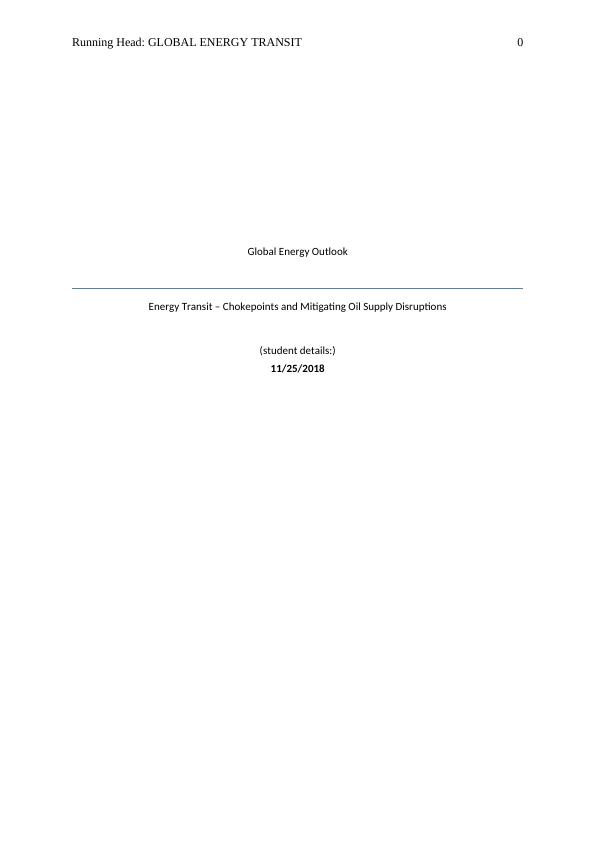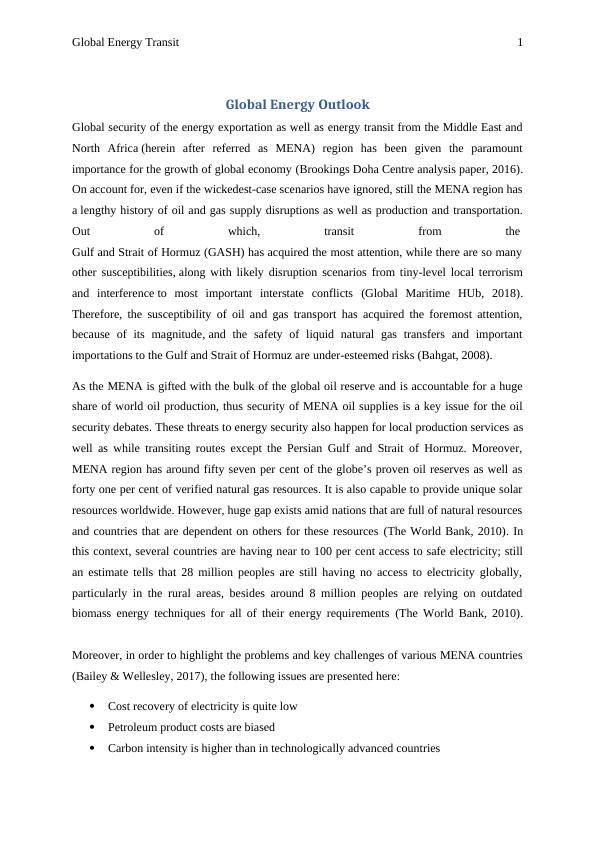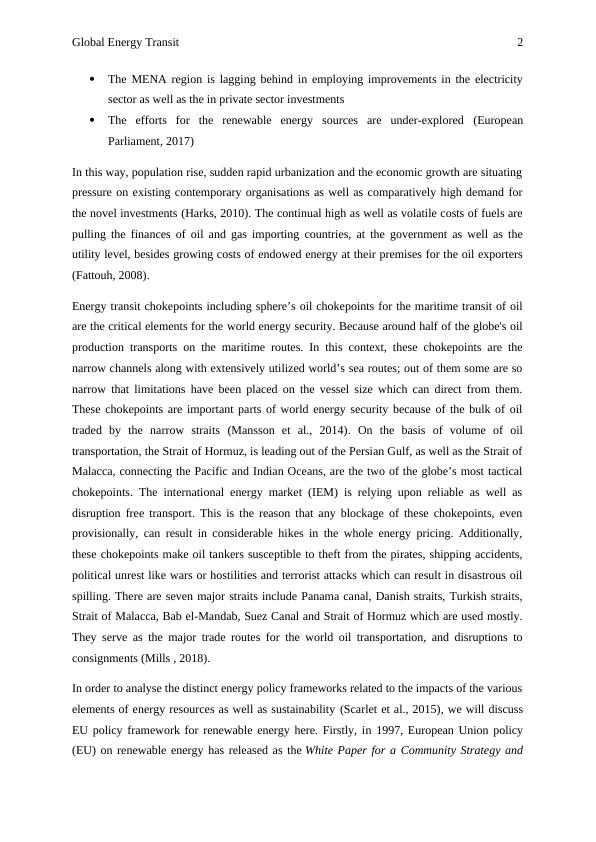Global Energy Outlook: Energy Transit – Chokepoints and Mitigating Oil Supply Disruptions
Explain the importance and relevance of global energy outlook within contemporary organisations and evaluate the relationship between these organisation and countries. Analyse the different energy policy frameworks in relation to the impact of the different elements of energy sources and sustainability. Discuss the key global challenges and issues facing the world oil and gas industry and the factors affecting their long-term prospects.
Added on 2023-05-30
About This Document
Global Energy Outlook: Energy Transit – Chokepoints and Mitigating Oil Supply Disruptions
Explain the importance and relevance of global energy outlook within contemporary organisations and evaluate the relationship between these organisation and countries. Analyse the different energy policy frameworks in relation to the impact of the different elements of energy sources and sustainability. Discuss the key global challenges and issues facing the world oil and gas industry and the factors affecting their long-term prospects.
Added on 2023-05-30
End of preview
Want to access all the pages? Upload your documents or become a member.



